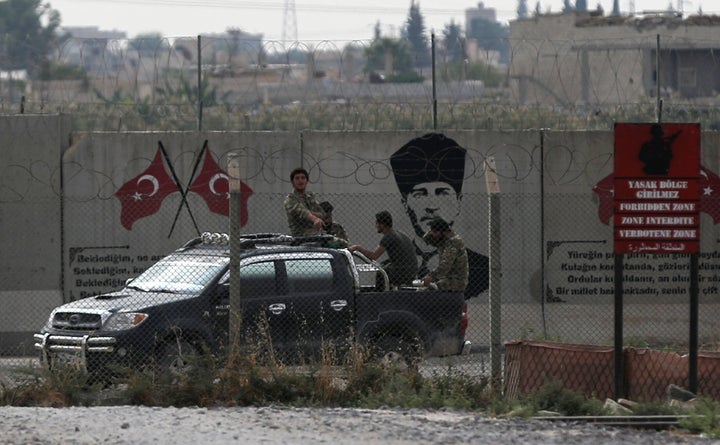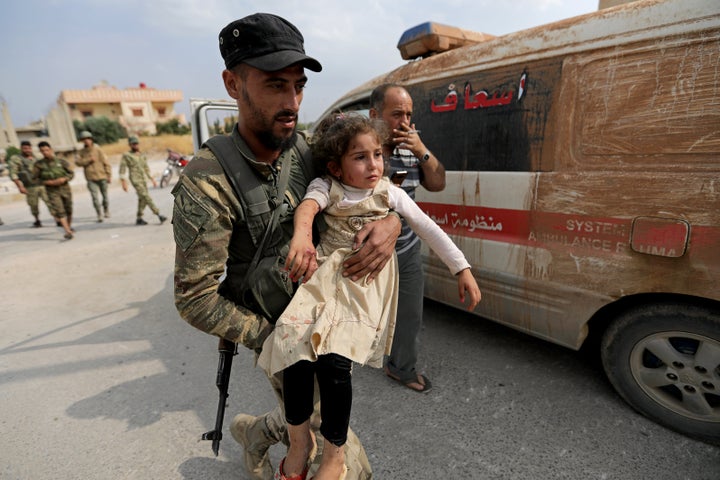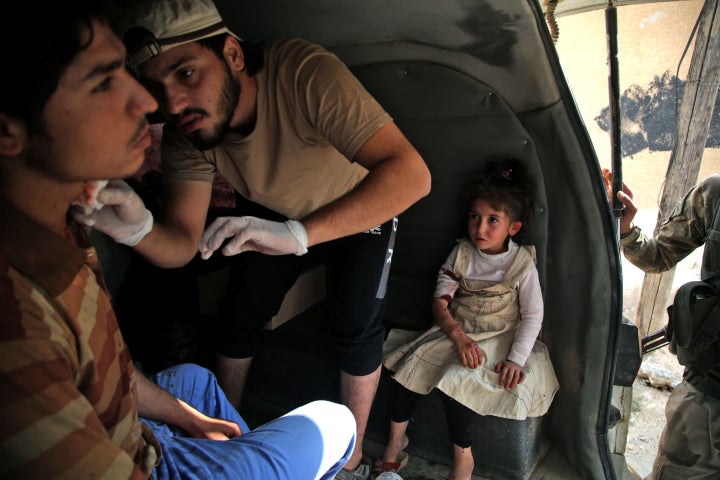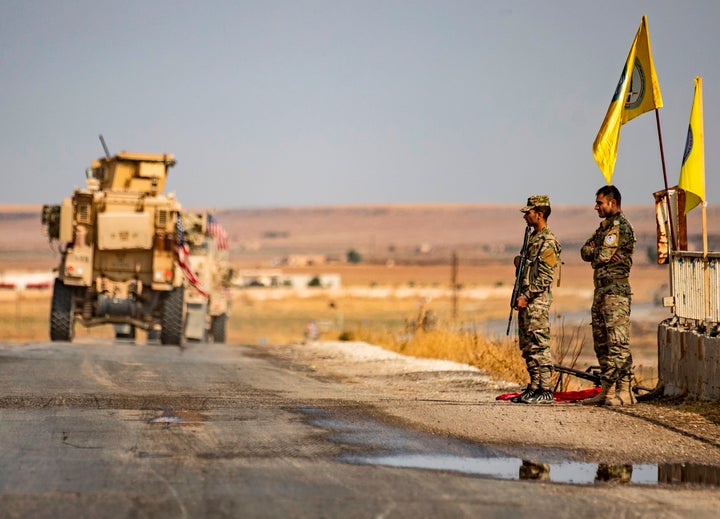AKCAKALE, Turkey (AP) — Kurdish-led fighters and Turkish-backed forces clashed sporadically Sunday in northeastern Syria amid efforts to work out a Kurdish evacuation from a besieged border town, the first pull-back under the terms of a U.S.-brokered cease-fire. Turkey said one of its soldiers was killed in the day’s violence.
The planned evacuation of Kurdish fighters and civilians from the town of Ras al-Ayn would open the way to a pull-out of the fighters from a broader swathe of territory along the border, a senior official in the Kurdish-led forces told the Associated Press
The official, Redur Khalil, said Saturday evening that the evacuation could take place Sunday if there were no new problems.

Both sides accuse each other of repeatedly violating the three-day old cease-fire. Turkey’s Defense Ministry said the soldier was killed in a Kurdish attack with anti-tank weapons and small arms fire near the border town of Tal Abyad.
That brought the Turkish military’s death toll to seven soldiers since it launched its offensive against Kurdish-led fighters in northeast Syria on Oct. 9.
The Kurdish-led Syrian Democratic Forces said Turkish troops and their allied Syrian fighters have continued their offensives the past 24 hours, forcing its fighters to retaliation. It said 16 SDF fighters had been killed and three wounded in Turkish attacks around the border town of Ras al-Ayn and nearby villages.

Ras al-Ayn, under siege by Turkish-backed fighters, has been the scene of continual fighting since the cease-fire came into place on Thursday night.
Khalil told the AP that the force had reached understandings with the Americans to evacuate its fighters from the town from the start of the cease-fire but the siege had delayed the plans. Turkish officials have denied they were preventing the withdrawal of any fighters.
On Saturday, medical convoys were able to enter for the first time into neighborhoods still in the hands of the Kurdish fighters, delivering medical supplies and bringing out 30 wounded and four dead.

Khalil said the full evacuation could follow the next day unless there were new delays. A spokesman for Turkish President Recep Tayyip Erdogan, Ibrahim Kalin, also told the AP he hoped to see a pull-out from the town on Sunday.
Khalil said that once the Ras al-Ayn evacuation was carried out, Kurdish-led forces will withdraw from a swath of border territory in accordance with the U.S. -brokered deal. He said their fighters would re-deploy from a zone 120 kilometers (75 miles) wide and 30-kilometers (20 miles) deep between Ras al-Ayn and Tel Abyad.
Under the cease-fire deal, Kurdish-led forces are supposed to carry out the pull-back by the time the pause in fighting runs out Tuesday evening.
A pull-back would be a major boost to the deal. But significant issues remain.
A previous agreement between the U.S. and Turkey over a “safe zone” along the Syria-Turkish border floundered over the diverging definitions of the area.

Erdogan has said the Kurdish fighters must withdraw from a far larger length of the border from the Euphrates River to the Iraqi border — more than 440 kilometers (260 miles) — or else the Turkish offensive will resume on Tuesday.
U.S. officials say the agreement pertains to the 120-kilometer section. Erdogan’s spokesman, Kalin, confirmed that is the area affected by the pause in fighting, but said Turkey still wants the larger zone.
Turkey considers the Kurdish-led fighters as terrorists because of their links to a Kurdish insurgent group inside Turkey. It says any presence of the group along its borders is an existential threat. Turkey also wants to resettle some of the 3.6 million Syrian refugees on its soil in the border “safe zone.”
Another question is what the arrangement will be along the rest of the northeastern border, from the Euphrates River to the Iraqi border, most of which remains solely in the hands of Kurdish-led fighters.

U.S. troops were once positioned in much of that area, but President Donald Trump abruptly removed them, opening the way for the Turkish invasion. Abandoned by their allies, the Kurds then turned to Russia and secured an agreement for Syrian government forces to deploy in the northeast last week.
So far, the Syrian forces have only moved into one location directly on the border, the town of Kobani, and a few positions further south.
Erdogan is to meet Russian President Vladimir Putin in the Russian town of Sochi on Tuesday. His spokesman Kalin said he will tell Putin that Ankara does not want either Syrian forces or Kurdish fighters along the border because refugees would not go back to areas under their control.
“We want to create conditions that will be suitable for them to return where they will feel safe.”
Mroue reported from Beirut. Zeynep Bilginsoy in Istanbul contributed.
REAL LIFE. REAL NEWS. REAL VOICES.
Help us tell more of the stories that matter from voices that too often remain unheard.
Credit: Source link